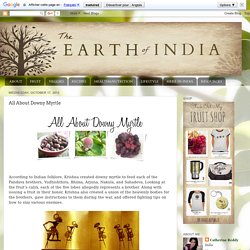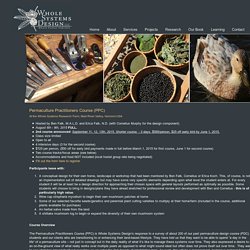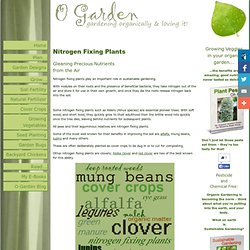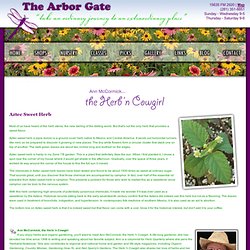

The Earth of India: All About Downy Myrtle. According to Indian folklore, Krishna created downy myrtle to feed each of the Pandava brothers, Yudhishthira, Bhima, Arjuna, Nakula, and Sahadeva, Looking at the fruit’s calyx, each of the five lobes allegedly represents a brother.

Along with issuing a fruit in their honor, Krishna also created a union of the heavenly bodies for the brothers, gave instructions to them during the war, and offered fighting tips on how to slay various enemies. Origin of Downy Myrtle Downy myrtle originates in South Asia from the regions encompassing India to the Philippines. While the fruit itself is not well recognized, various parts of the shrub features in several medicinal practices from Chinese medicine to Ayurveda. Initially, plant researchers grouped downy myrtle with other plants in the Myrtus genus. Whole Systems Design - Permaculture Practitioner's Course (PPC) Participants leave with: A conceptual design for their own home, landscape or workshop that had been mentored by Ben Falk, Cornelius or Erica Koch.

This, of course, is not an implementation set of detailed drawings but may have some very specific elements depending upon what level the student enters at. For every student it will be at least be a design direction for approaching their chosen space with general layouts performed as optimally as possible.
UF/Miami-Dade County Extension Programs: Urban Horticulture Publications: Old Roses for South Florida. BACK to Urban Horticulture Main Page | Urban Horticulture Links | Urban Horticulture Photos Old Roses for South FloridaBy John McLaughlin* & Joe Garofalo* If you wish to have roses as part of your Miami-Dade landscape, and yearn to put away the spray can and grow plants that still retain most of their foliage throughout the summer, these roses are for you.

Many of the roses discussed below will grow into substantial shrubs (up to 8-10' in height and width) given the climate of South Florida, and once established are far more drought tolerant than modern roses. They will flower prolifically throughout the year (particularly if deadheaded[1]), often with the most enticing fragrances, and if not offering the stunning color range of modern hybrid tea roses, display subtle variations in tints and shading. Creating The Forest Garden. Jerome Osentowski and Peter Bane (USA) [Conference Day 3 @ 16:00 - Submitted Paper (From an article in The Permaculture Activist #31)] After observing the diversity of tropical systems in Nepal and Nicaragua and in particular their rapid establishment, Jerome Osentowski, inspired by Bill Mollison's elaboration of the succession of sub-tropical systems, (Permaculture International Journal 40:24) brought these ideas home to Basalt Mountain in Central Colorado.

There the basic design principles of permaculture systems took on different clothing: diverse polycultures; emphasis on perennials; use of succession in both establishment and yield; dense multi-story plantings (stacking); little or no cultivation of soil; using multi-functional plants, animals, and structures; matching yields and needs of the elements in the system for mutual benefit, and most importantly; close interaction between the resident/designer and the evolving system, based on observation. Dynamic Accummulator Weeds. Advanced Search by Characteristics (All Things Plants) Member Login:

Establishing a Food Forest 3-Hour Session with Geoff Lawton (Calgary, August 14, 2014) Geoff Lawton, the internationally beloved permaculture teacher, is headed to Calgary to film our site, so we couldn’t help but ask him to teach for us.

Companion Planting Chart. Nitrogen Fixing Plants; leguminous nutrient gleaners. Nitrogen fixing plants play an important role in sustainable gardening.

With nodules on their roots and the presence of beneficial bacteria, they take nitrogen out of the air and store it for use in their own growth, and once they die the roots release nitrogen back into the soil. Some nitrogen fixing plants such as Alders (Alnus species) are essential pioneer trees. With soft wood, and short lived, they quickly grow to their adulthood then the brittle wood rots quickly once the tree dies, leaving behind nutrients for subsequent plants. All peas and their leguminous relatives are nitrogen fixing plants. Some of the most well known for their benefits in improving the soil are alfalfa, mung beans, lupins and many others.
These are often deliberately planted as cover crops to be dug in or to cut for composting. Weeds and What They Tell by E.E. Pfeiffer. Companion-Planting_afristar.jpg 906×1,280 pixels. Outlook.com: Your Personalized Planting Reminders. Subtropical Permaculture Plant List - Aaron Jerad Designs. 1: Mesquite Tree - bean for flour, nitrogen fixing, over story tree (Full sun) 200 foot taproots draw water up.

Bee food tree from flowers. Extreme drought tolerance. 1: Fig - Good over-story tree fruit. Full sun only. 1,2: Casurina littoralis – Casurina, ironwood, sheoak. Ann McCormick Herb 'n Cowgirl Pick of the Month. Most of us have heard of the herb stevia, the new darling of the dieting world.

But that's not the only herb that provides a sweet flavor. Aztec sweet herb (Lippia dulcis) is a ground cover herb native to Mexico and Central America. It sends out horizontal runners like mint, so be prepared to discover it growing in new places. The tiny white flowers form a circular cluster that stack one on top of another. The dark green leaves are about two inches long and toothed on the edges. Aztec sweet herb is hardy in my Zone 7/8 garden.
The chemicals in Aztec sweet herb leaves have been tested and found to be about 1500 times as sweet at ordinary sugar. Full Shade Salvias - Page 1 - Flowers by the Sea. Garden Companion Planting. By Filip Tkaczyk Garden Companion Planting If you have ever dreamed of growing your own edible garden, then you should know one of the keys is garden companion planting.

Companion planting is the concept of planting mutually supportive species together so that all the plants benefit each other. Comfrey. Russian comfrey (Symphytum x uplandicum) Comfrey (also comphrey) is a common name for plants in the genus Symphytum. Comfrey species are important herbs in organic gardening. It is used as a fertilizer and as an herbal medicine. Useful (Mostly edible) Climbing Florida Plants for Arbors & Trellises. Shade Tolerant Edible & Medicinal Plants for Florida Gardens. Drought Tolerant Edible & Useful Plants for Florida. Companion Planting List - Positive & Negative Interactions. Nitrogen Fixing Plants. Plants That Provide Forage for Poultry. The Ultimate Florida Permaculturist Plant Shopping List. Dynamic Nutrient Accumulator Plants.